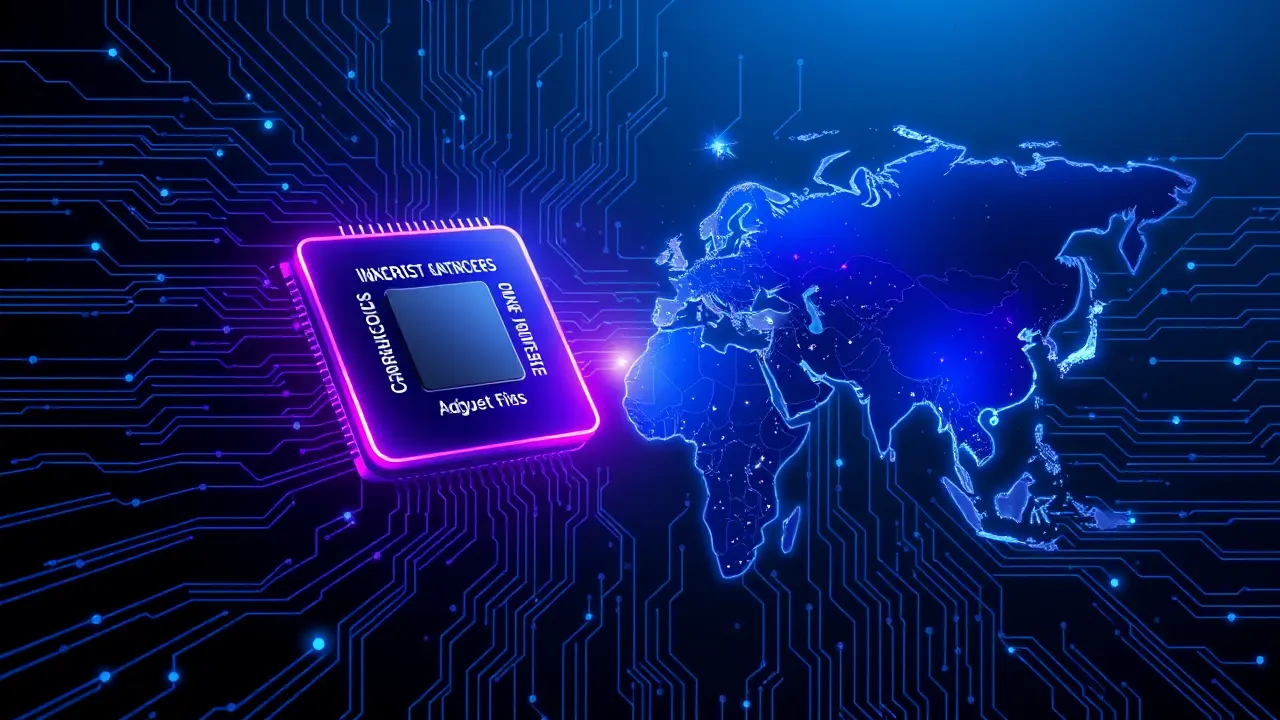Cambricon and SenseTime Collaborate on AI Self-Reliance
The strategic partnership between Chinese chip designer Cambricon Technologies and artificial intelligence giant SenseTime represents a significant escalation in the global AI infrastructure race, a move that transcends mere corporate collaboration and enters the realm of geopolitical strategy. Announced via a WeChat post, this alliance aims to forge a new, indigenous AI development paradigm, directly responding to the State Council's 'AI Plus' strategy unveiled in August.This is not simply about two companies pooling resources; it's a meticulously orchestrated effort to achieve technological self-reliance, a goal that has become a central pillar of Chinese national policy in the face of escalating US-led export controls on advanced semiconductors and manufacturing equipment. Cambricon, often dubbed China's answer to NVIDIA, brings its specialized hardware prowess to the table, particularly its line of neural processing units (NPUs) like the Siyuan series, which are engineered for high-performance AI training and inference tasks.SenseTime, a behemoth in computer vision and large language models, contributes its vast software stack and algorithmic expertise, from its SenseCore AI data center platform to its burgeoning portfolio of generative AI applications. The synergy is obvious: create a closed-loop ecosystem where Chinese hardware is optimized from the silicon up to run Chinese AI software with maximum efficiency, thereby circumventing the need for Western technology.This ambition mirrors historical technological sovereignty drives, such as Europe's Galileo satellite navigation system developed to counter US dependence on GPS, but the stakes in the AI domain are exponentially higher. The 'AI Plus' strategy itself is a sweeping directive intended to deeply integrate artificial intelligence across all sectors of the Chinese economy—from manufacturing and agriculture to healthcare and urban management—creating an immense, domestic demand for AI compute that the current global supply chain, dominated by American firms, may be unwilling or politically unable to fulfill.Experts observing the sector note that while Cambricon's chips have historically lagged behind the cutting-edge performance of NVIDIA's H100 or B200 GPUs, this partnership could accelerate their maturation through real-world, large-scale deployment on SenseTime's massive cloud infrastructure. The collaboration likely involves co-designing next-generation AI accelerators, where SenseTime's software engineers provide critical feedback on architectural features needed to efficiently run future LLMs and multimodal models, a process that could close the performance gap faster than anticipated.However, the path to true self-reliance is fraught with challenges. The most significant bottleneck remains in semiconductor manufacturing; while China's SMIC has made surprising progress with its 7nm and 5nm-class processes, it still trails behind TSMC and Samsung in yield, transistor density, and power efficiency, factors critical for the most demanding AI workloads.Furthermore, the ecosystem of software tools, compilers, and developer communities built around CUDA presents a formidable moat that Cambricon's native platform must overcome. The success or failure of this Cambricon-SenseTime venture will have profound consequences, potentially creating a bifurcated global tech landscape: one sphere operating on US-aligned silicon and software stacks, and another, led by China, developing along a separate, parallel technological track.This could lead to divergent AI model architectures, application programming interfaces, and even ethical standards, complicating international cooperation and setting the stage for a new, digital iron curtain. For the global AI research community, this move underscores the urgent need for more robust open-source foundations and cross-border collaborations that can withstand geopolitical fractures, lest the pursuit of technological sovereignty ultimately stifles the collective advancement of artificial intelligence itself.
Latest News
The charts are whispering what the true believers have felt in their bones for weeks—Dogecoin is carving out a bottom.
17 hours ago5 comments
The Institute for Fiscal Studies has thrown a stark warning onto Rachel Reeves's desk, urging the Chancellor to confront a potential £22 billion shortfall in
17 hours ago3 comments
Alright, let's break down this absolute heater of a performance from the Chicago Blackhawks, because if you missed this one, you missed a party.
17 hours ago5 comments
The ice was hot last night in the NHL, folks, serving up a slate of games that felt less like a regular season Tuesday and more like a playoff preview with a
18 hours ago3 comments
The XRP chart is painting a tantalizing picture for those with the stomach to withstand the relentless pressure from crypto's leviathans.
18 hours ago4 comments
It’s in the small shifts, the quiet recalibrations of a Thursday morning, where the most meaningful change often takes root.
18 hours ago4 comments
In a move that sent ripples of quiet confidence through the crypto ecosystem, blockchain intelligence firms tracked a monumental treasury allocation from
18 hours ago4 comments
In a move that would have drawn a nod of approval from historical figures like Churchill, who understood the delicate balance of power within democratic
18 hours ago2 comments
JA
Jamie Larson123k10 hours ago
this reminds me of the whole race for your own operating system back in the day feels like we're just rebuilding the same walls but with AI smh
0
JA
Jamie Chen123k13 hours ago
interesting move but that software ecosystem is a massive hill to climb tbh, cuda's moat is just so deep
0
JA
Jamie Wilson123k19 hours ago
this feels like a massive gamble tbh, idk if they can really close that tech gap so fast but i guess we'll see
0
